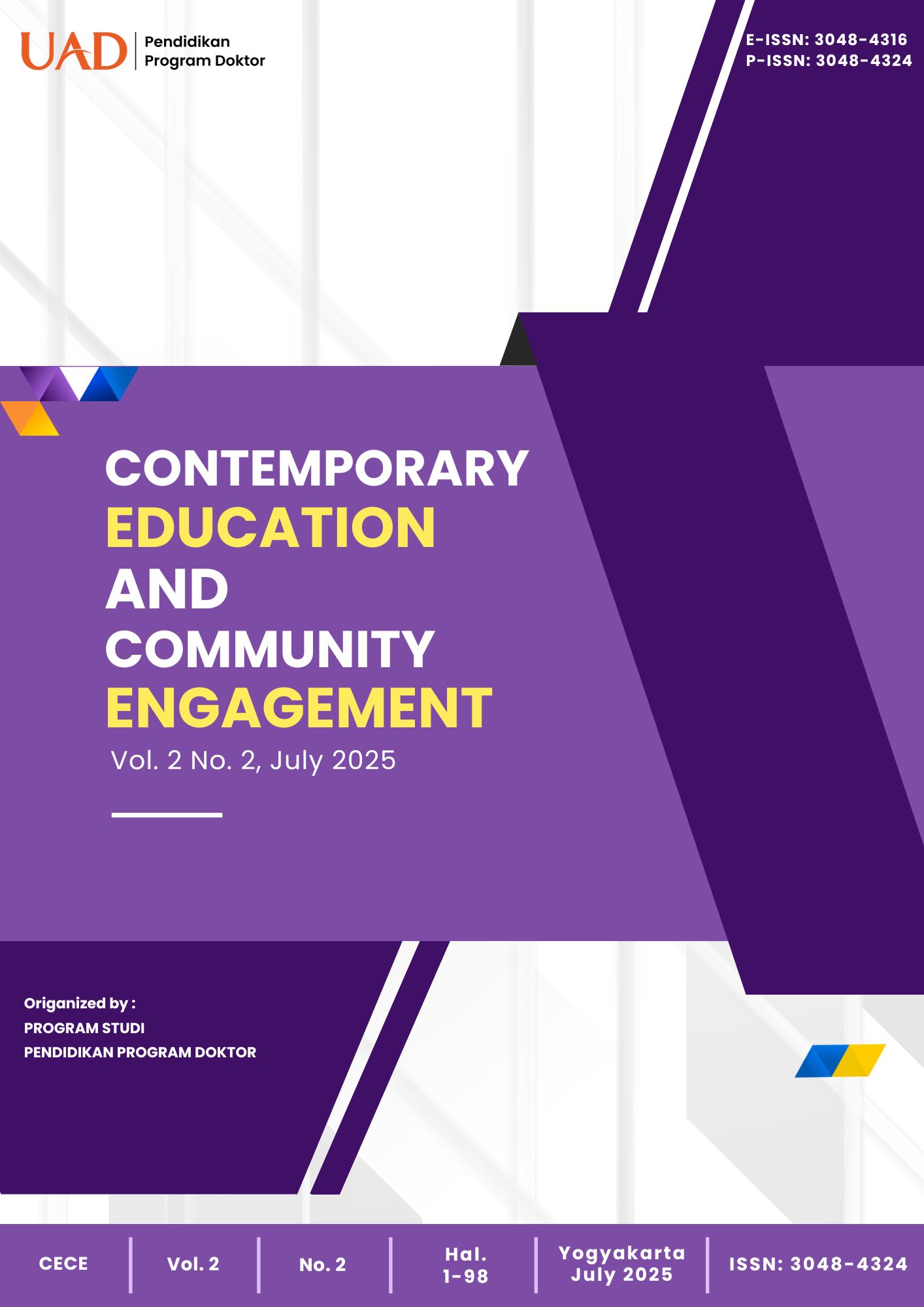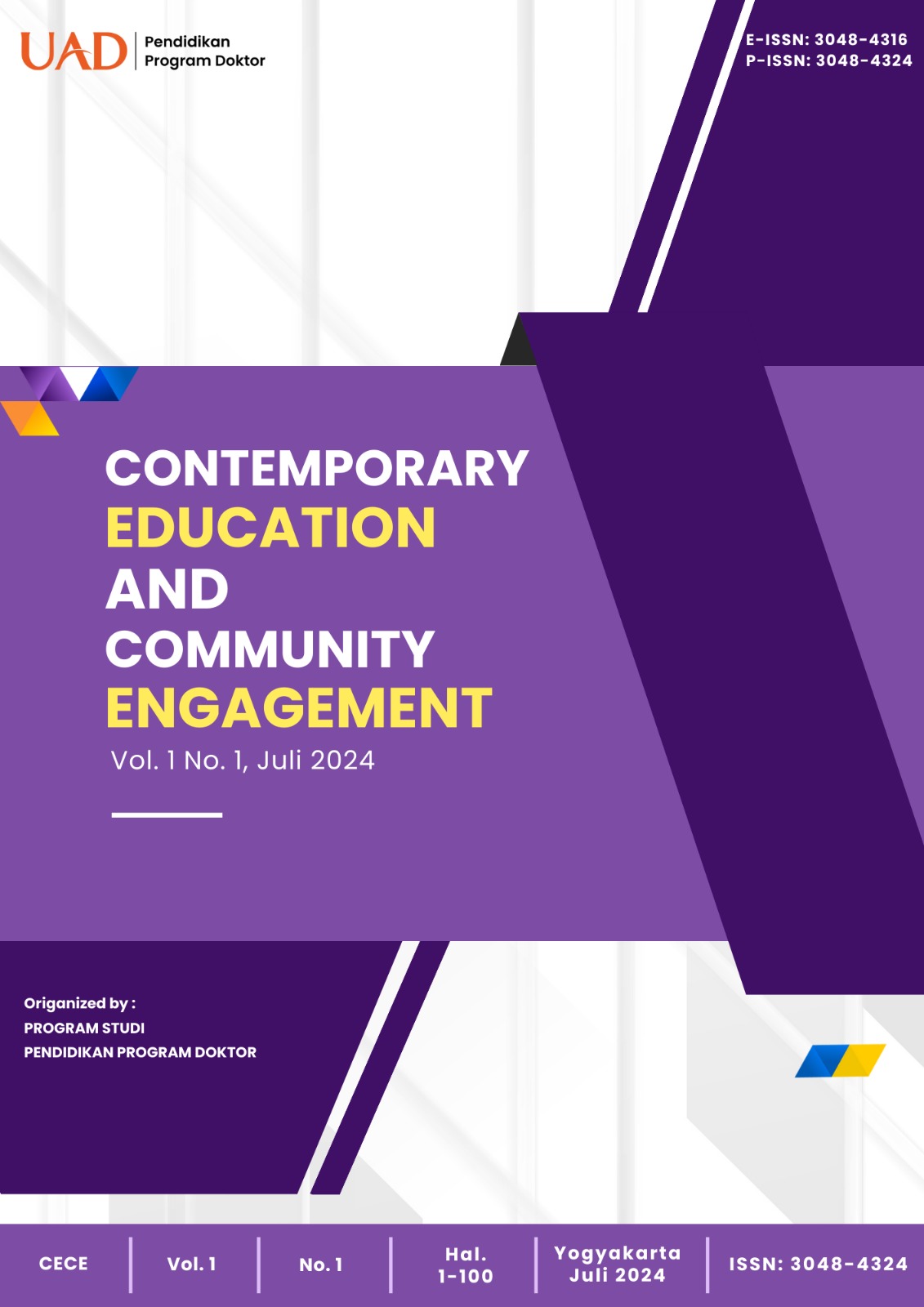Evaluation of Religious Plus Program Implementation at Muhammadiyah Nitikan Primary School
DOI:
https://doi.org/10.12928/cece.v2i2.1372Keywords:
Elementary School, Evaluation, Memorization, Religious Plus ProgramAbstract
This evaluation research aims to examine the implementation of the Plus Program at Muhammadiyah Nitikan Elementary School through three dimensions: input, process, and output. The study adopts Stake’s Countenance Model of evaluation, focusing on how the program is designed, executed, and its resulting outcomes. A qualitative case study approach was used to explore the implementation in depth within its real-life educational context. Instead of a sample, the study identifies key informants—individuals who are most knowledgeable about the Plus Program—namely, the school principal, the program coordinator, and the religious studies teachers. Data were collected using observation, in-depth interviews, and documentation. The qualitative data were analyzed through thematic analysis, guided by the evaluation criteria aligned with the Plus Program standards defined by the Educational Council of Muhammadiyah Branch Leadership of Umbulharjo. The findings reveal that: (1) In the input phase, the program’s objectives are well-aligned with its vision, producing graduates who excel in academic performance, religious faith, and moral conduct. First-grade student admissions showed that 3.54% had begun reading the Qur'an, while 96.46% were at Iqro’ levels 1 to 6. The infrastructure is highly adequate, with Campus 1 having its mosque. The curriculum is structured and includes evaluation and follow-up mechanisms, although further efforts are needed to integrate it into a formalized school curriculum. (2) In the process phase, the program is systematically managed, involving all school stakeholders, and its implementation is well-coordinated through the Religious Plus Program structure. (3) In the output phase, 100% of sixth-grade students have completed the Iqro’ stage, while 77.47% have completed Qur'an memorization (tahfidz), leaving 22.53% who have yet to finish. Regarding non-academic outcomes, student achievements in various competitions indicate that talent development programs are running effectively.
Downloads
Published
How to Cite
Issue
Section
License
Copyright (c) 2025 Mujiyem Mujiyem, Salmo Joshepine Magay

This work is licensed under a Creative Commons Attribution-ShareAlike 4.0 International License.





